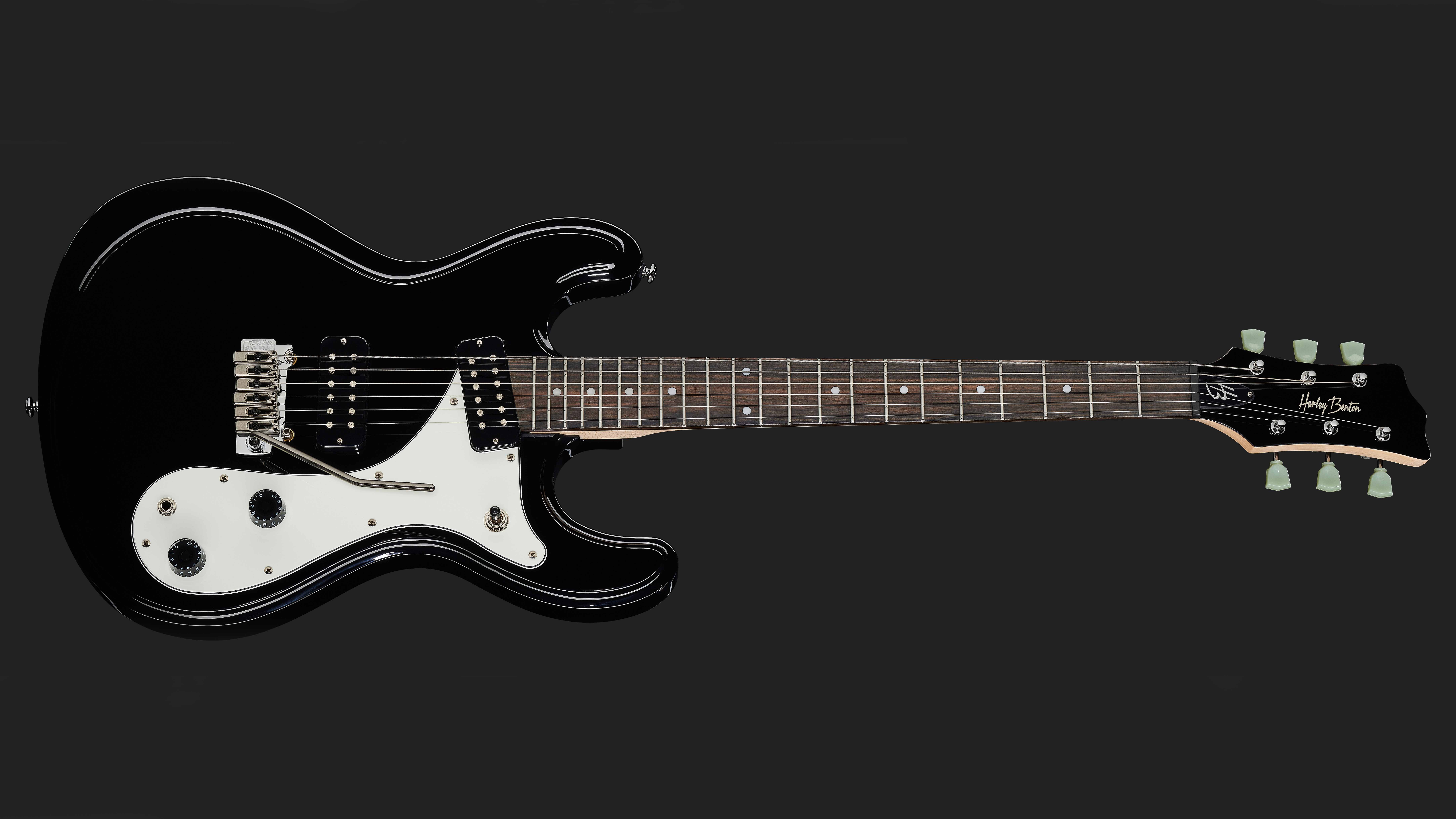MusicRadar Verdict
A hefty guitar physically and in value. If you're looking for a Mosrite-esque shape with an impressive gamut of tones and higher end hardware touches, this is a generous dose of guitar.
Pros
- +
Still a refreshingly bold shape.
- +
Good range of tones through P-90-size humbuckers
- +
Stainless steel frets on a sub-£300 is impressive.
Cons
- -
The action was too high out of the box.
- -
Ours was on the Les Paul side of heavy.
MusicRadar's got your back
What is it?

The MR series is a left-field turn for a brand that has found its greatest success drawing inspiration from the world's most popular guitar designs. Even the keenest fans of Mosrite's guitars from the '60s wouldn't be able to include it in that rollcall. And yet here we are, Harley Benton hasn't just released one guitar inspired by Mosrite but two; the MR-Classic is a P-90 model but this MR-Modern features humbuckers with coil-splits, locking tuners and… stainless steel frets! Both come in baritone iterations too.
We were taken by this idea of modernising a vintage influence so wanted to take a closer look at the standard scale Modern, and put it through its paces.
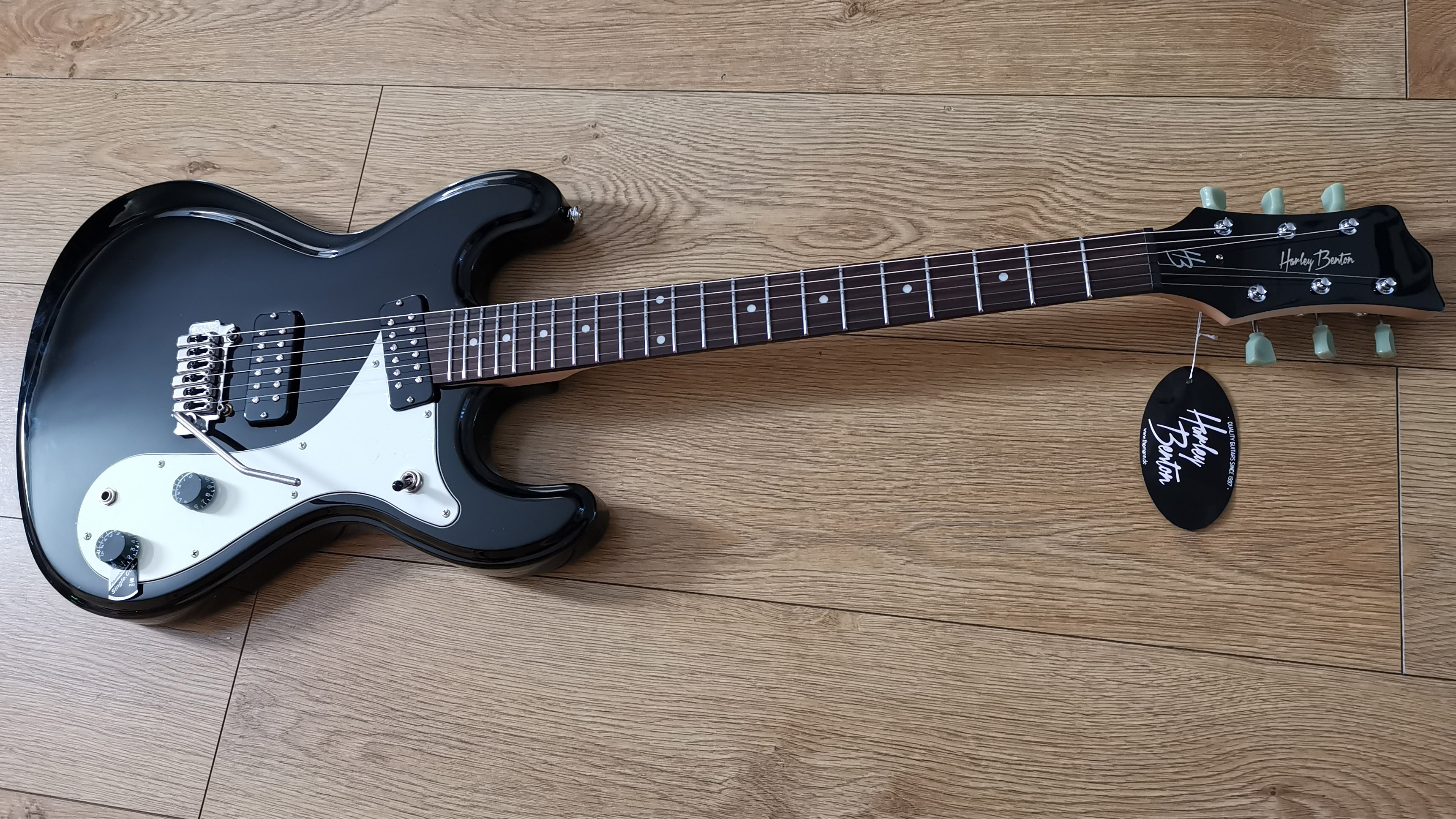
Guitars are inevitably tied to players who make history with them, and Mosrites were no exception. Thinking of the brand, and this shape, may conjure up different players depending on your persuasion; Kurt Cobain in Nirvana's Bleach era 1968 Mark IV Gospel, seminal instrumental group The Ventures and Johnny Ramone.
The Ventures even had their own signature model in 1963 , five years before the company went bust. And Ramone used a modified version of the 1965 Ventures II.
Founder Semie Moseley had served his time with two key names before he started making his own guitars in the late '50s; an apprenticeship under Paul Bigsby have him a grounding hardware and working as an apprentice for visionary luthier Roger Rossmeisl at Rickenbacker gave him insight into the 'German carve' style that he would later utilise on Mosrite bodies.
Semie's daughter has continued to build under the Mosrite name in California, and HB aren't the first brand to produce guitars inspired by the original '60s designs. The key deviation here in shape being the headstock – understandably the quirky 'M' shape carve in the top is absent in place of a smoother curve.
The body shape is a talking point in itself; a kind of reverse offset with a longer lower horn. Some may feel it looks upside down, others will love how it deviates from guitar design expectation.
Want all the hottest music and gear news, reviews, deals, features and more, direct to your inbox? Sign up here.
Performance and verdict
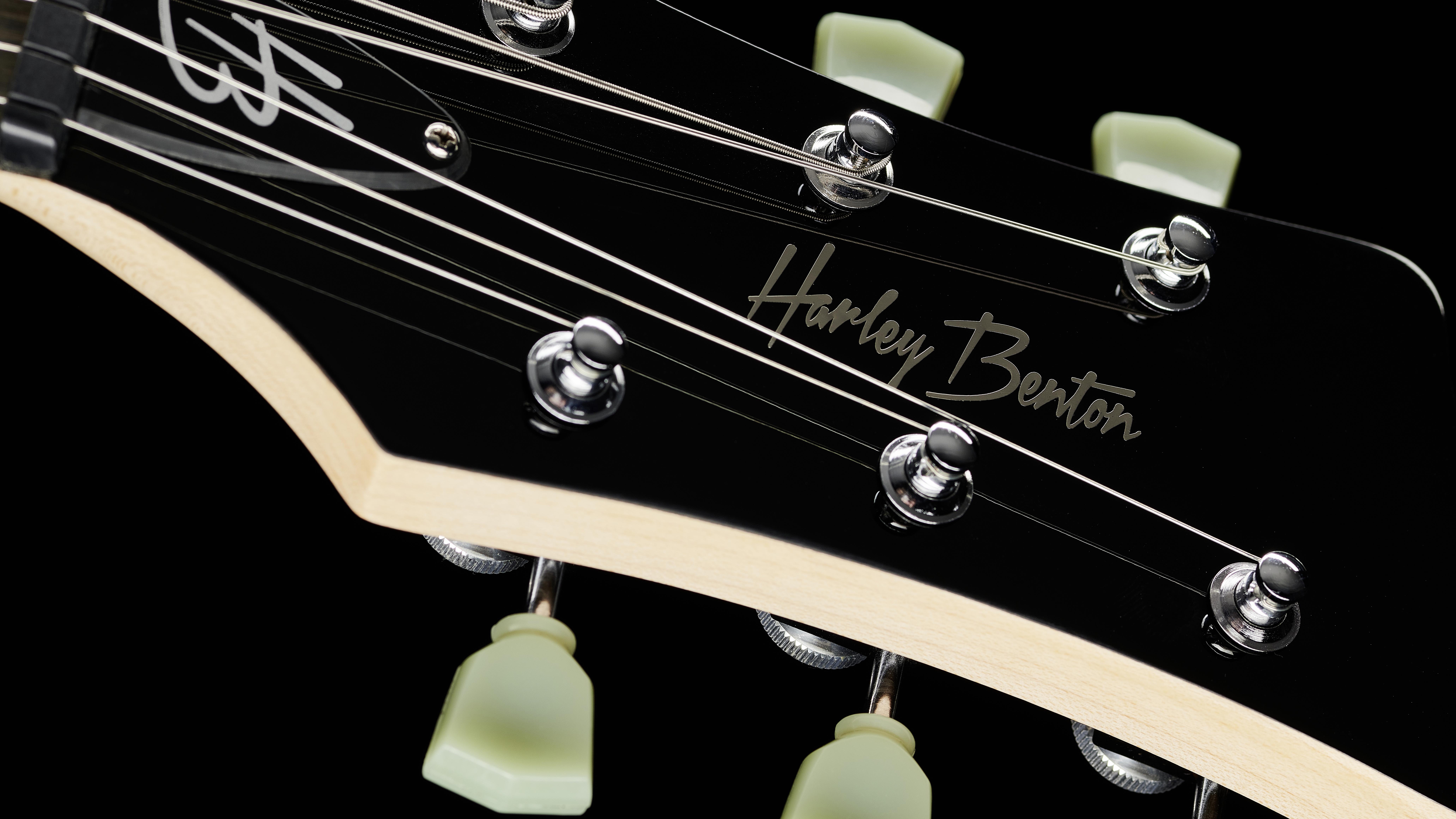
Like any other player out there when they pull a new guitar out of the box, the first thing we want to do is pick this guitar up for a play. But the second is check the truss rod. As is often the case with anything that's been in the varying temperatures of storage and transit, it needs adjustment. More than usual, as it happens. And it's only when we've gauged that we'll find out how it's been set up, action-wise.
We think it's too high; string height is obviously personal preference but we think new guitars should try and stay on the medium to low side. At over .08 on the low E from the top of the 12th fret this is neither and makes the guitar challenging to play. We take it down to around .06 on the low E and the same on the high E, using a 12-inch radius gauge to set the other string heights between them… or is it the 12" radius Harley Benton state? It feels wider, so we double check, and our radius gauge suggests it's closer to 14".
After we make our .06 adjustments, the saddle blocks look as low as they will go to the bridge at that point so we might be at the extreme of low action for this guitar, but we wouldn't want to go lower anyway.
We're confident doing these adjustments ourselves, and we got things playing nicely with relative ease, but we understand there are players that won't be so we'd advise taking it to someone who can (that will involve a fee unless they're a pal) or following our guitar setup guide. But where it really matters, the Indonesian Harley Benton factory have done themselves proud here at this price point…
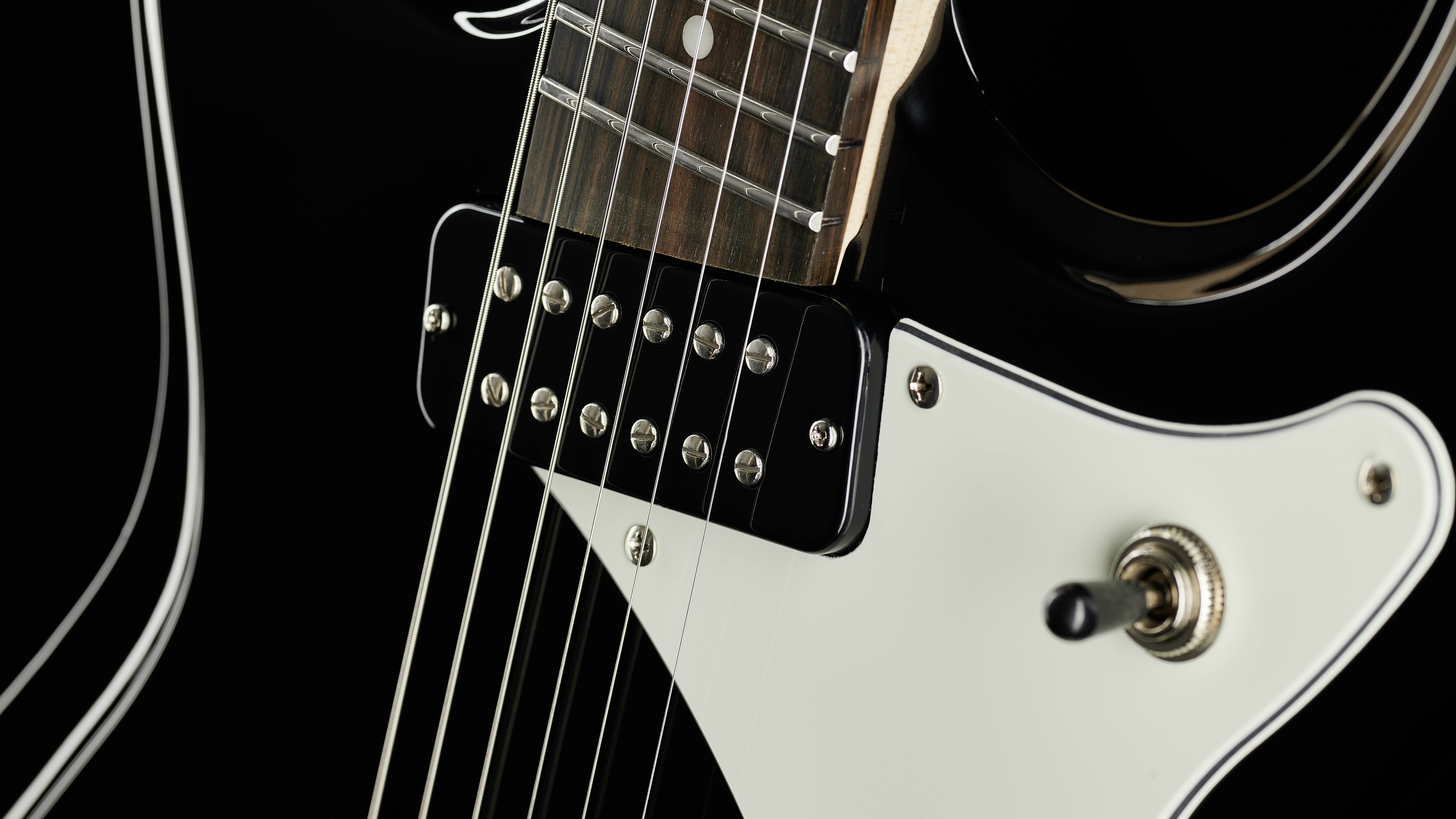
It feels big and it weighs it too, but the satin finish on the back of the maple neck is a big plus for comfort
A hard truth we've found during years of testing is perfectly level frets are not the norm, especially at this price point, and though we detect a couple of higher spots on frets here that could be addresses later by a tech, it doesn't affect playability, even at our lower action. We've detected similar with guitars more expensive than this, and here you're getting the added durability of stainless steel frets.
Their hardness will require less maintenance and you'll be hard pushed to wear them down over the years. They've been polished well here, with no scratchy areas. Harley Benton doesn't state the size, but it feels medium jumbo to us – far from the super low original spec on the Ventures Mosrite models.
The finish all round is good, with just some unevenness on the underside where the neck overhangs the body join – a purely cosmetic point that doesn't affect playability. and can only be seen while looking down while playing. The black finish here might not be the best to showcase the German body carve style but it looks slick with the silver hardware, and we find no flaws.
The ebony fingerboard definitely feels on the flatter side here, which our radius reading earlier would attest to, even with the 'C' shape neck the flatter radius feels wider than Gibson-influenced SC models in the HB line we've played. Coupled with the hefty 8.8lb (3.9kg) weight of our test guitar this might be a tougher guitar on smaller statured and younger players. It feels big and it weighs it too, but the satin finish on the back of the maple neck is a big plus for comfort.
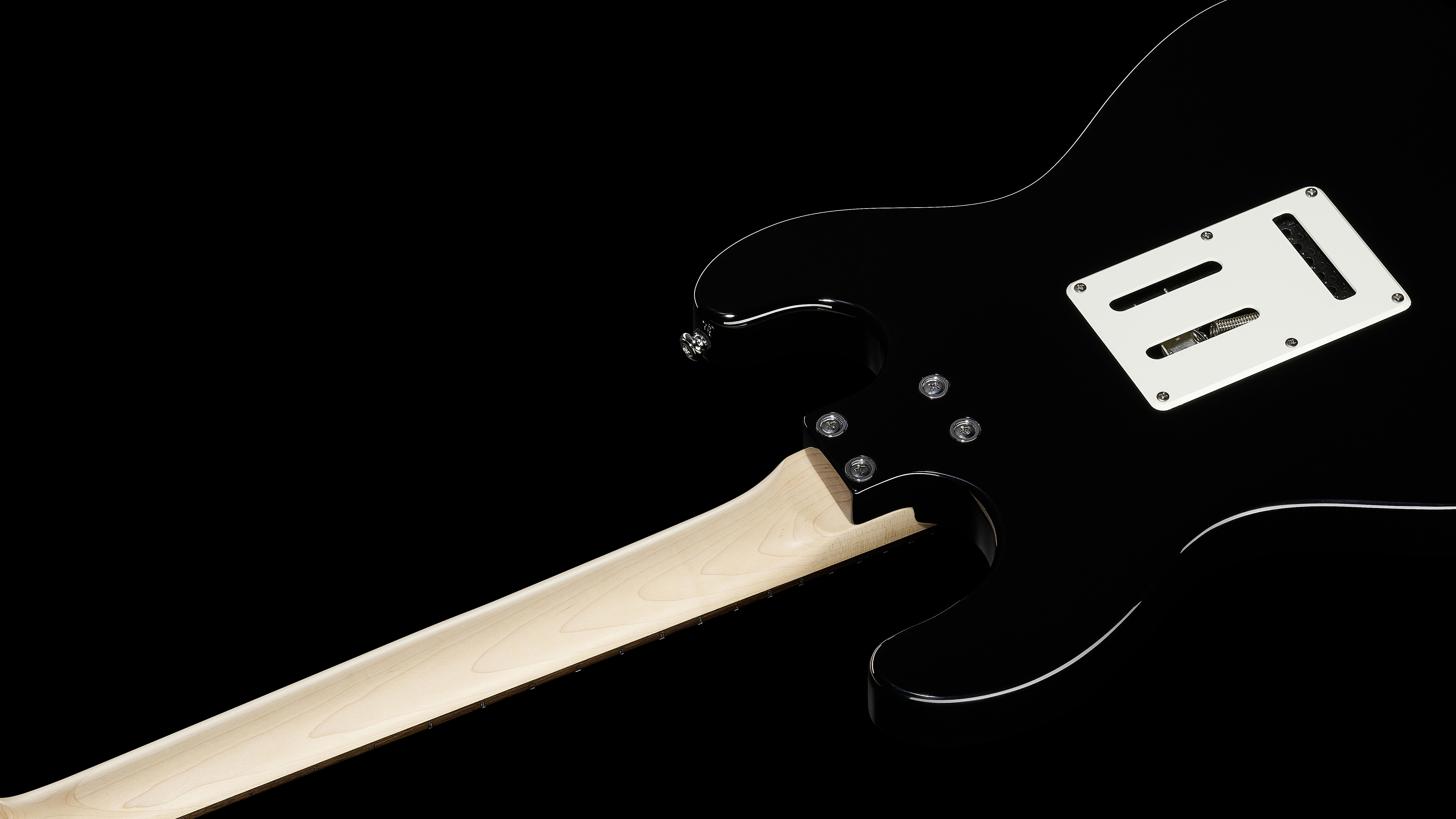
It's a halfway house between a humbucker and a contemporary P-90 to our ears; a good place to live
The pair of Artec AHC-90 soapbar-size Alnico-5 humbuckers means there's scope for retrofitting P-90s in the future but these buckers give a very good account of themselves; on the brighter side and as we crank up medium levels of gain on the bridge pickup, chords sound full, ringing and crunchy, rather than compressed. There's definitely some P-90 chime and punch in there, without the fizzier highs. It's a halfway house between a humbucker and a contemporary P-90 to our ears; a good place to live.
On the neck there's that slightly hollow, throaty tonality in the mids we love – a bluesy, moody place that never gets too dark unless you wind the tone back. Punk, classic rock and punk are all welcome here.
The coil-split voices bring a thinner, snappier optional voice to each pickup. The drop in low end and output is noticeable, as with many coil-splits, but there's definitely some ballpark Strat action to be had on that neck position with some drive. The pickups' inherent brightness helps to add character and cut for gain and, but can be too much unless you dial back the tone on the bridge pickup. Again, par for the course with coil splits in our experience. The mid position is our favourite split position for lower key strumming.
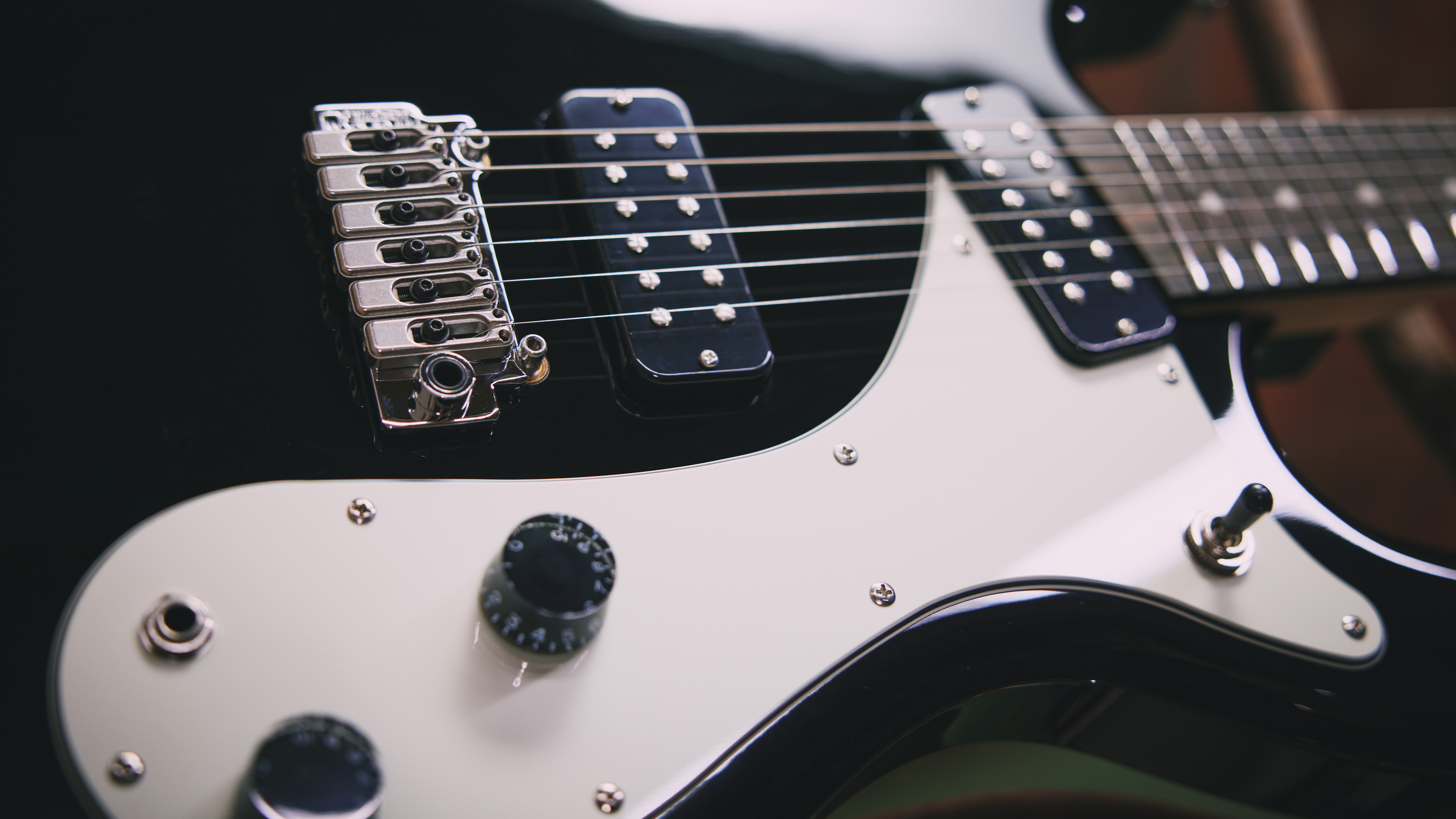
Because we changed the string tension in our truss rod and saddle adjustment, we needed to let the guitar settle and recheck the truss rod before we could really evaluate the tuning stability with the Wilkinson VS-50 II precision tremolo.
And it holds up well! We're not divebombing but the stability is reassuring, coupled with the smooth action of the Wilkinson tulip-style locking tuners. Rounding out a positive experience with hardware on a surf-punk vibe guitar that punches confidently above the price, something that's now a calling card for this brand.

MusicRadar verdict: A hefty guitar physically and in value. If you're looking for a Mosrite-esque shape with an impressive gamut of tones and higher end hardware touches, this is a generous dose of guitar.
Buy Harley Benton MR-Modern at Thomann
Hands-on demos
60 Cycle Hum
Leigh Fuge
Jon is just TOO LouD!!
Harley Benton
Specifications
- ORIGIN: Indonesia
- TYPE: Reverse offset, solidbody electric
- BODY: Alder
- NECK: Canadian maple, C-shape, bolt-on
- SCALE LENGTH: 648 mm (25.5”)
- NUT/WIDTH: Graph Tech Tusq / 42mm
- FINGERBOARD: Macassar ebony fingerboard, Harley Benton states radius as 12"
- FRETS: 22 Blacksmith stainless steel
- HARDWARE: Wilkinson VS-50 II Precision Tremolo, Kluson style Wilkinson locking tuners
- STRING SPACING, BRIDGE: 52mm
- ELECTRICS: 2 x Artec AHC-90 Soapbar-size Alnico-5 humbuckers, 1 x tone (activates push/pull coil-split), 1 x volume, 3-way pickup toggle selector
- WEIGHT (kg/lb): 3.9 / 8.8
- OPTIONS: MR-Classic with basswood body, roasted jatoba fingerboard and P-90s, MR-Modern baritone and MR Classic baritone
- LEFT-HANDERS: No
- FINISH: Black (as reviewed), Pearl White, Metallic Blue, Candy Apple Red, 3-Tone Sunburst
- CONTACT: Thomann
MusicRadar is the number one website for music-makers of all kinds, be they guitarists, drummers, keyboard players, DJs or producers...
- GEAR: We help musicians find the best gear with top-ranking gear round-ups and high-quality, authoritative reviews by a wide team of highly experienced experts.
- TIPS: We also provide tuition, from bite-sized tips to advanced work-outs and guidance from recognised musicians and stars.
- STARS: We talk to musicians and stars about their creative processes, and the nuts and bolts of their gear and technique. We give fans an insight into the craft of music-making that no other music website can.
- Rob LaingReviews Editor, GuitarWorld.com and MusicRadar guitars
